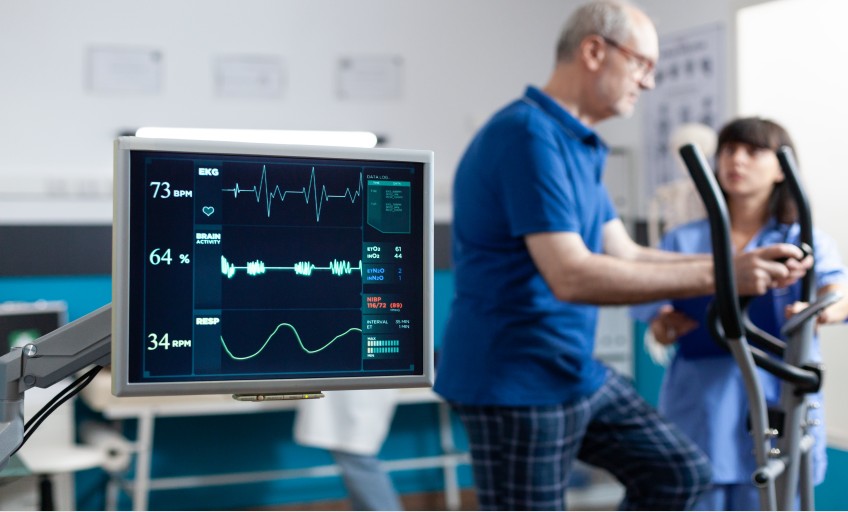Have you ever wondered if you are really getting the most out of your workouts? Understanding your heart rate zones could be the key to unlocking faster fat burn, better endurance, and smarter training. Whether you are a beginner or a seasoned athlete, training in the right zone can make all the difference.
What are heart rate zones?

Heart rate zones indicate various percentages of your maximum heart rate. They can assist in guiding the intensity and effectiveness of your workout.
Understanding heart rate zones and their importance
Heart rate zones are determined by a percentage of your maximum heart rate. They indicate how hard your heart is working to pump your blood and keep pace with the demands of what you are doing. The higher your heart rate, the higher the heart rate zone you are in and the harder your body is working to keep up.
How do heart rate zones affect exercise performance?
Heart rate zones provide a guideline for the intensity and effectiveness of workouts. They help you understand how hard your body is working and which energy sources – fat, carbs, or protein – are being utilized. By monitoring your heart rate within these zones, you can customize your exercise routines to achieve specific fitness goals, whether building endurance, burning fat, or improving speed and power.
The 5 heart rate zones
The five heart rate zones, ranging from zone 1 to zone 5, are as follows:
Zone 1: Very light activity
It ranges from 50% to 60% of the maximum heart rate. At this point, 85% of the calories burned come from fat. Although you will burn fewer calories overall compared to exercising at a higher intensity, you can sustain this zone for a longer duration. This zone is ideal for warm-ups and recovery. You can comfortably hold a conversation at the pace at which you are moving.
Zone 2: Light activity
It falls between 60% and 70% of the maximum heart rate. Approximately 65% of the calories burned are from fat. You can still engage in a light conversation in this zone, though you might need to pause momentarily to catch your breath. This zone is the target range for base-level aerobic activities, such as brisk walking, swimming, and cycling.
Zone 3: Moderate activity
It falls between 70% and 80% of the maximum heart rate. Approximately 45% of the calories burned come from fat. Speaking in this zone requires effort. This is the target heartbeat range for aerobic endurance activities, such as walking, jogging, biking, and jumping rope.
Zone 4: Hard activity
It falls between 80% and 90% of the maximum heart rate. You are no longer using fat as fuel. You cannot maintain this pace for more than about 15 minutes. Talking at this point would be difficult. This zone is the target range for anaerobic activities such as weight lifting, sprinting, and high-intensity interval training (HIIT).
Calculating your heart rate zones
The formula to calculate your training zone is as follows:
([Maximum heart rate – resting heart rate] x % intensity) + resting heart rate = training zone.
Here is how you can calculate your heart rate zones.
1. Maximum heart rate (MHR)
Maximum heart rate = 220 – your age
Your maximum heart rate indicates the highest number of beats per minute that your heart can handle safely.
The most accurate method to determine your maximum heart rate is an exercise stress test or VO2 max test. During the test, you will be connected to a heart rate monitor while running at your highest speed on a treadmill or pedalling on an exercise bike. The heart rate you reach at your limit is your maximum heart rate.
You can estimate your maximum heart rate with a simple calculation: Subtract your age from 220. For example, a 40-year-old would have an estimated maximum heart rate of 180 (220 – 40 = 180).
2. Resting heart rate (RHR)
If your maximum heart rate is when you push yourself to your limits, your resting heart rate is the opposite.
Your resting heart rate indicates how many times your heart beats per minute while sitting or lying still. For most people, this ranges from 60 to 100 beats per minute. Well-trained athletes typically exhibit a lower resting heart rate than those who are less physically fit.
Many wearable heart rate monitors can provide your resting heart rate at any time, or they may display it based on an average gathered over several days.
You can also determine your resting heart rate by feeling your pulse and counting the beats per minute.
3. Heart rate reserve (HRR)
Heart rate reserve = maximum heart rate – resting heart rate. Your heart rate reserve is the difference between your maximum and resting heart rates.
Let us return to our 40-year-old example. Assume their resting heart rate is 70 beats per minute (bpm). Their heart rate reserve would be 180 (maximum heart rate) minus 70 (resting heart rate), which equals 110. Keep this number handy for the next step.
4. Target heart rates per zone
To determine your target heart rate for each zone, multiply your heart rate reserve by the percentage of your maximum heart rate that each zone represents.
- 50% (0.5) for zone 1
- 60% (0.6) for zone 2
- 70% (0.7) for zone 3
- 80% (0.8) for zone 4
- 90% (0.9) for zone 5
Now, add back to your resting heart rate for the final step.
And there you go! You now have your target heart rates for each zone.
Exercise zone for weight loss
Pushing yourself to your limit might seem like the most effective way to lose weight. However, as your heart rate increases, your body utilizes more carbohydrates and protein — rather than fat — for fuel. For effective weight loss and to build endurance, it is best to exercise in the zones that rely on fat for energy — zones 1 through 3.
When your heart rate increases, your body requires less oxygen. You cannot oxidize fat quickly when oxygen levels are low. Therefore, your body shifts to another more readily available energy source — glycogen, also known as carbohydrates. You can engage in short bursts within higher, more intense heart rate zones to challenge your body. However, it is most effective to spend longer periods at 50% to 70% of your maximum heart rate for optimal results.
Heart rate zone for cardiovascular health
For most people, what matters most for heart health is making an effort to move more. Any exercise will enhance your cardiovascular health, regardless of duration. This is because your heart is a muscle, and like any other muscle, it requires your efforts to keep it strong.
If you elevate your heart rate above its resting level, you are contributing to improved cardiovascular health. Even a slight increase in heart rate strengthens your heart and helps improve blood pressure, cholesterol, blood sugar, and more.
Heart rate tracking necessary?
If tracking your heart rate brings you joy and motivation, then go for it. However, if heart rate calculations become a hindrance, concentrate on how your body feels while exercising.
Impact on fitness goals
Heart rate zones offer a method to gauge and direct the intensity of your workouts, influencing your fitness goals. By comprehending and applying heart rate zones, you can customize your exercise intensity to optimize for specific fitness objectives, enhancing cardiovascular health, burning fat, building endurance, or boosting speed and power.
Benefits of heart rate training
Here are some key benefits of heart rate training:
- Increased endurance
- Fat burn while building lean muscle
- Boosted metabolism for up to 48 hours after a workout, as the body recovers from the increased oxygen demand
Precautions with heart rate zones

When using heart rate zones for exercise, keep the following points in mind:
- Talk to a doctor before starting a new routine, especially if you have a heart condition or take medications that affect your heart rate.
- Pay close attention to your body’s signals, stopping if you feel lightheaded, have a pounding heart, or experience chest pain.
- Consider factors like age, fitness level, and medications, as these can influence your heart rate and target zones.
Train smart, live strong
Paying attention to your heart rate zones during exercise is one way to maximize the benefits of your workouts. Therefore, ensure you engage with your heart rate zones and savor the advantages for optimum health and well-being.
Key Takeaways
- Heart rate zones are specific ranges of heartbeats per minute (bpm) that correspond to various exercise intensities.
- They range from zones 1 to 5.
- Simple formulas can calculate your maximum, resting, and target heart rate zones.
- Exercise caution while using heart rate zones.
Stay tuned to the Activ Living Community. Keep up to date with the latest health tips and trends through expert videos, podcasts, articles, and much more on nutrition, fitness, mindfulness, and lifestyle conditions like Asthma, Blood Pressure, Cholesterol, and Diabetes. Activ Living ke saath sahi sehat ki shuruat ABHI karo.
You may also be interested in the following blogs:
- Ever Wondered Why You Have A Low Heart Rate? Know More About Bradycardia
- All You Need To Know About Resting Heart Rate
Popular Searches
How to lower blood pressure | Fruits good for liver | Unhealthy foods | Ragi Benefits | Basal Metabolic Rate | Acupressure points for High Blood Pressure | Ayurvedic medicine for blood pressure | How to control cholesterol at home | Homeopathy for Asthma | Biological Age | Home remedies for TB | Natural beta blockers | Negative effects of internet | Types of walking | Blood pressure calculator | Blood sugar calculator | BMI Calculator





 1800-270-7000
1800-270-7000






